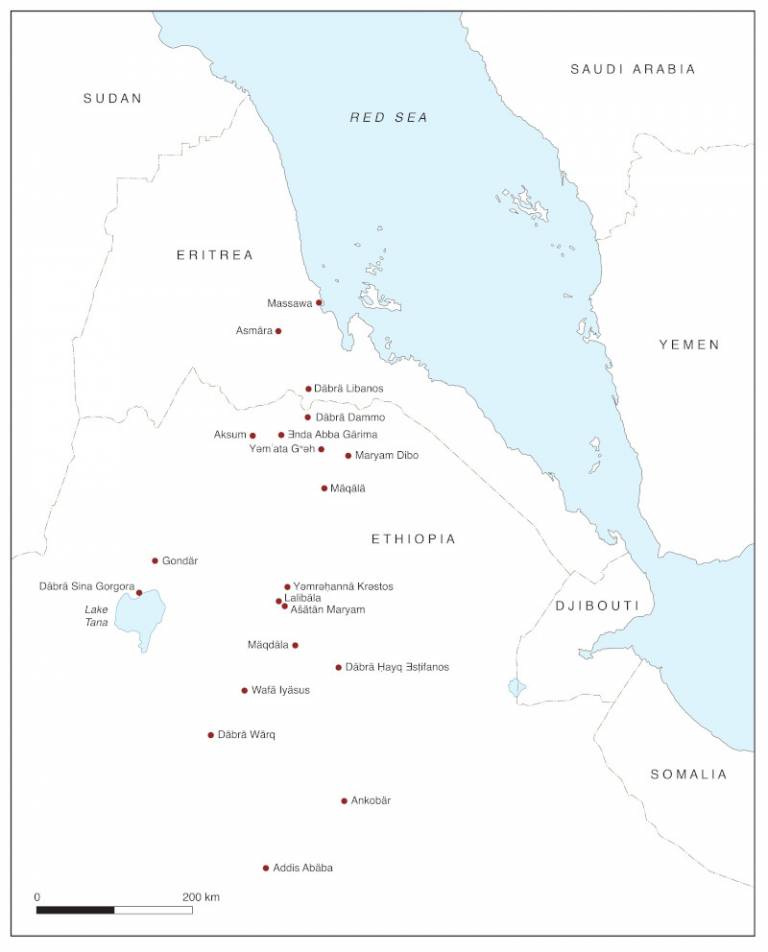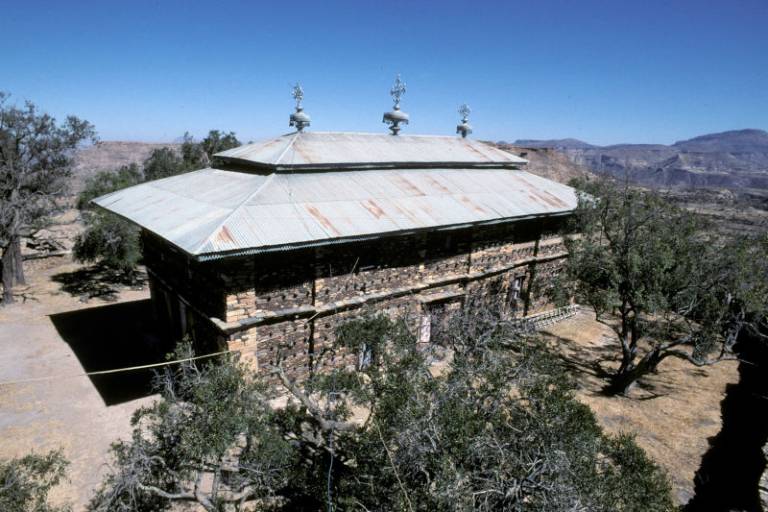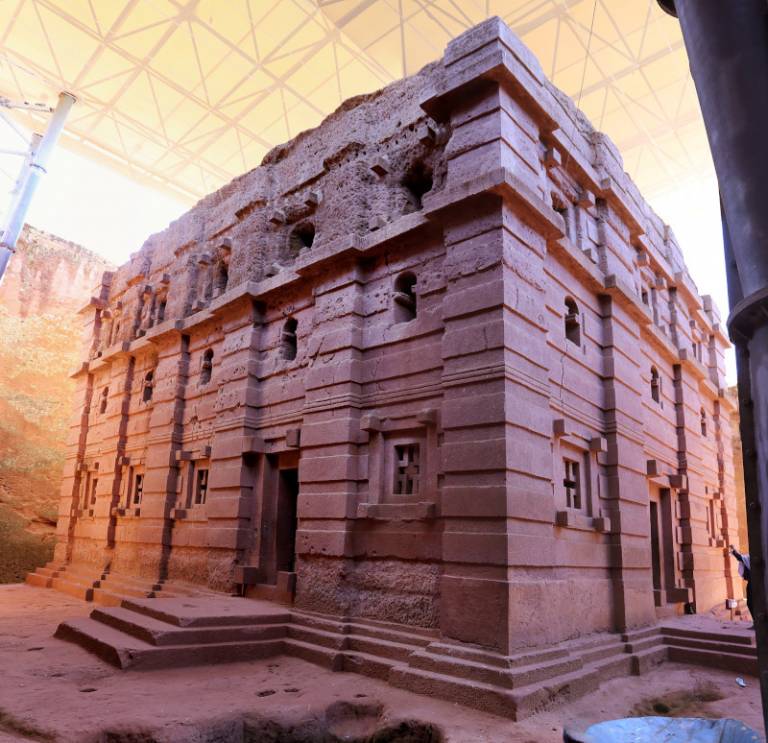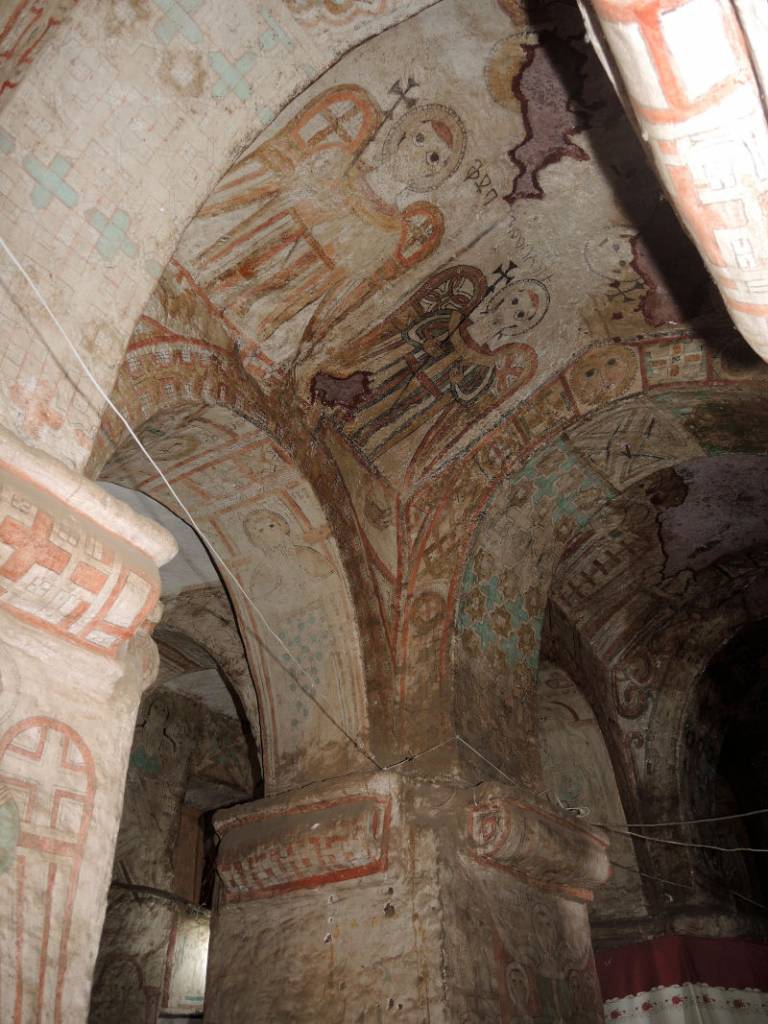Ethiopian Christianity
Ethiopia, in East Africa, is home to people of many different faiths including Waaqeffanna, Islam, and Christianity. The history of Ethiopian Christianity dates back to mid-4th century AD, when the ruler of the Aksumite Empire ʿEzana converted to Christianity. Its adoption as a state religion is evidenced by the appearance of crosses on coins from this period. The Ethiopian Empires continued to be ruled by emperors until the deposition of Emperor Haile Selassie in 1974 AD.

Fig. 1.1. Map of Ethiopia (© Alison WilkinsAlison Wilkins & Miranda Williams).
Most Christians in Ethiopia are members of the Ethiopian Orthodox Tewahedo Church, which is the largest of the Oriental Orthodox Churches – a group that includes churches in Syria, Armenia, India and Egypt. Christian Ethiopians needed churches, service books, and many other objects to practice their faith. Hundreds of churches, dating from the 4th to the 15th centuries AD, are scattered across the country. They were built using a variety of materials and techniques that resist generalization and attest to the achievements and devotion of artists and patrons from this region. The best-known examples include the cathedral of Aksum, the monastic church of Däbrä Dammo (1.2), and the rock-hewn churches of Lalibäla and Tigray (1.3). Ethiopian churches from this period were decorated with lavish wall paintings and were repositories of revered ancient objects such as illustrated manuscripts and crosses (1.4).

Fig. 1.2. Church of Däbrä Dammo, ca. 5th–6th cent. AD (© Michael Gervers).
Ethiopian wall paintings
This display focuses on the technology and significance of Christian Ethiopian wall paintings that are found in a range of architectural settings including rock-cut churches and free-standing structures. These churches are located in variety of settings including plains, inaccessible mountain peaks (8.3), lakeshores (2.3), and inside caves (3.1).

Fig. 1.3. Church of Betä Amanuʾel, Lalibäla, ca. 12th–13th cent. AD (CC: Sailko)
Ethiopian artists employed a wide variety of themes, styles and wall painting technologies. At times, the interior of churches also featured elaborate painted carvings (3.2). Their images frequently show episodes inspired by the Old and New Testaments alongside historical figures and holy men and women (7.2). Paint was applied directly onto rock-cut surfaces, or onto gypsum and/or earth-based plasters. On top of the latter, white clay-based ground layers are often found. From about the second half of the 17th century wall surfaces were sometimes prepared with thin plaster slips, into which fine loose-weave cloth was incorporated and a ground layer applied on top (4.3), and in the 19th century, thick sections of cloth were glued onto walls.

Fig. 1.4. Virgin and Child with Four Apostles, from a Gospel manuscript in Gännätä Maryam, 15th–16th cent. AD (© Michael Gervers)
It is difficult to characterise developments in the use and variety of paint materials and their application techniques, as much analytical study remains to be done and there are many gaps in our knowledge. Through their empire’s extensive political and trading network, Ethiopian artists had access to a variety of materials and artworks imported from South and East Asia, the Middle East, and Europe, which they selectively included in their work. The hieratic nature and technical restraint displayed in their work was certainly an intentional choice by the religious communities they worked for rather than an imposed necessity (1.4). Emperors (4.1), monks (5.1), clergymen, nobles, and ordinary individuals could commission artworks for a variety of spiritual and devotional reasons. Ethiopian wall paintings can thus be analysed to further our understanding of the social, political, material, and religious history of Christians living within the Ethiopian Empire.
 Close
Close

